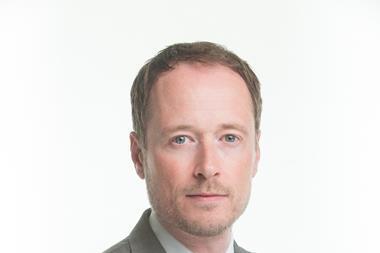With unstoppable momentum towards zero carbon, how can risk professionals identify key risks and opportunities?
Businesses are operating in a world where it is no longer enough to talk the talk where the climate-crisis is concerned. Failing to walk the walk holds grave legal, reputational, regulatory and ultimately existential consequences.
Legal action and activist shareholders in 2021 have given corporates a taste of more to come if they fail to take climate change seriously.
In May, a Dutch court ordered energy giant Shell to cut its CO2 emissions by 45% compared to 2019 levels. It was a historic verdict where heavy emitters are concerned, according to Friends of the Earth (FoE): “No more spin, no more greenwashing, big oil is over.”
With 1,841 climate litigation cases ongoing or concluded as of May this year, companies (and their insurers) will be concerned that loss of natural capital and biodiversity may be the next ESG pressure and a future liability exposure.
This year has also seen a case brought against French supermarket, Casino, by indigenous peoples from the Brazilian and Colombian Amazon and NGOs from France and the US.
“The case, which relies on the French statutory ‘duty of vigilance’ may, if successful, encourage others to bring similar cases against companies for environmental violations in their supply chains,” notes Clyde & Co partner Nigel Brook.
“Against this backdrop, it is inevitable that companies will increasingly face ‘soft’ pressure from consumers, investors and other stakeholders to properly map and assess such risks, particularly given the wealth of information that is now available in respect of resource consumption and climate change,” he continues.
“As the volume of existing cases and trend in pro-environment legal judgements suggests, ‘hard’ pressure in the form of new conduct and reporting requirements is already being applied.”
David and Goliath
Shareholder rebellions at ExxonMobil and Chevron have demonstrated how even small activist investors can shape the agenda at very large organisations in a rapidly changing world.
Hedge fund Engine No. 1 - backed by investment giant BlackRock - took a successful stance against the status quo, replacing two Exxon board members with its own candidates to help drive the oil company towards a greener strategy.
At Chevron, a majority of shareholders voted in favour of an activist proposal from Dutch campaign group Follow This, insisting the company drastically cut its carbon emissions.
“Oil majors that don’t radically reduce emissions this decade, cannot claim to be Paris-aligned,” said Mark van Baal of Follow This, in a statement following the release of the latest IPCC report in August.
Other energy firms have been more proactive, pre-empting the inevitable by adopting audacious transition pathways, even if in the short term, it means sacrificing the bottom line.
“Energy and the hard-to-abate sectors clearly require a lot of capital expenditure, but there is starting to be a roadmap,” says Amy Barnes, head of sustainability and climate change strategy at Marsh.
“They know broadly what they need to do and, particularly in the developed world, there are very large investments in technology in order to move to lower carbon energy sources.”
BP is no stranger to the reputational fallout that can be experienced by a major polluter, with its initial response to the Deepwater Horizon oil spill in 2010 causing damage to its brand and share price. Now, the firm has unveiled ambitious plans to cut oil production by 40% from 2019 levels and develop around 50GW of net renewable energy capacity by 2030.
It is a path that was laid down by what Bloomberg has labelled as ‘clean energy Supermajors’, a group which includes Italian and Danish energy giants Enel and Orsted, the latter of which divested its remaining fossil fuel assets in 2017 to focus purely on offshore wind.
Transitioning to a zero carbon economy is not just a challenge and opportunity for oil companies. But identifying which business models could feel the brunt of the climate threat and opportunity is not as straightforward than it might appear at first glance, explains Barnes.
“If we think about the fashion industry, there’s a move away from fast fashion and more focus on sustainability. But to what extent will the fashion industry also be impacted by the physical risk and drought affecting the availability of cotton and hemp as we moved to other fabrics? The complexities of the physical risk on the supply chain could mean there are more complexities than we’re necessarily anticipating.”
First movers will inevitably gain an advantage, she thinks. “It does feel as if the pendulum is shifting, from climate and sustainability being seen through the lens of risk and governance to it being seen as strategy and opportunity.”
“Our larger risk management clients are thinking more about, how can we make opportunity from this.”
“We see companies, like global energy and consumer goods firms, that are really seeing this as an opportunity.”
”But with some smaller clients they are probably more in the compliance and risk mindset still, although I do expect that to change as well, as our thinking on all things climate and sustainability matures.”
For these smaller companies, supply chain requirements could become a major driver.
There is a clear role for corporate risk managers, as societies, governments and businesses work towards targets such as net zero, thinks Sean McGovern, chief executive for UK and Lloyd’s at AXA XL.
“Risk managers can facilitate communication within their businesses about these risks and opportunities and help to underscore the vital role that we all have to play and to embed good ESG practices throughout their organisation.”
“Inaction is not an option, but it is also important to remember that with change comes opportunity – risk managers can help their organisations to find the opportunity in this change,” he adds.
“Risk managers are ideally placed to facilitate communication and dialogue on these issues, both with different stakeholders within their organisations but with wider business, governmental departments and other groups too.”




















1 Readers' comment